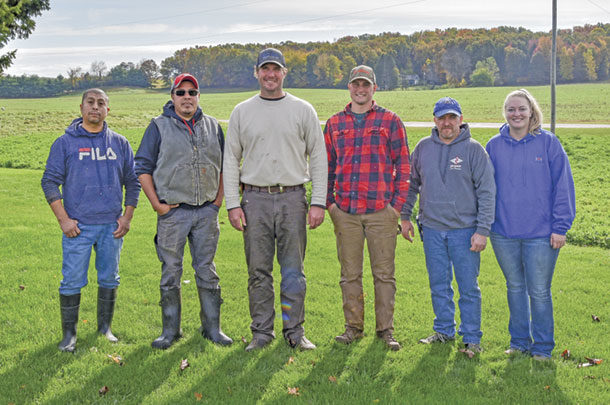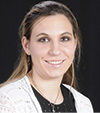There aren’t any shortcuts to outstanding reproductive performance. Rather, it is a careful blend of consistency and data management according to the needs and specifications of a particular farm.
Aaron Gasper, the fifth-generation owner of Lew-Max LLC, knows this well. With his skilled team of key hired hands, he has been able to get the best of both worlds using technology and data management to keep the 600-head milking herd at the top of their reproductive success.
For their commendable efforts, this herd was one of seven recognized by CentralStar Cooperative with their ReproStar award – one that acknowledges producers for their reproductive efficiency accomplishments through a panel of judges who evaluate each dairy’s data for multiple factors known to influence pregnancy rates.
Their herd currently maintains a 36% pregnancy rate with 102 days open and 67% submission rates.
According to Gasper, “It’s all the small details that add up, and my herdsman, Jorge Delarosa, is coordinating and making sure all the protocols are implemented on time. It’s also making sure the fresh cows are off to a good start.”
Enter Lew-Max
Lew-Max LLC is located in Belding, Michigan, and primarily made up of registered Holsteins. The farm milks 3X with a 106- to 110- pounds-per-day average, accounting for seasonality.
The herd is managed and monitored with the assistance of DHI milk tests, estrus synchronization and Afimilk pedometers. For as long as Gasper can remember, they’ve always used the pedometers, but in the last two to three years, they’ve transitioned to a wireless pedometer system. Not only has this shift helped them stay even more on top of their protocols, it’s also helped them fine-tune their decisions and timing.
He says that with the transition, they are able to collect data from their animals every 15 minutes as opposed to three times per day. And that has made a notable difference in their performance.
Behind their repro success
It starts with setting goals for the herd, and Kelly Bristol, sales manager for CentralStar, works closely with Lew-Max to do exactly that.
“The (reproductive) numbers are incredible and speak for themselves,” she says, “but I think it gets (down to) the attention to detail, and having a herdsman like Jorge and Aaron to oversee things is really critical. They really know the cows well … and that has led to their overall success.”
Bristol aids in their bull selection and says they look at net merit values and production, followed by overall looking at health traits for an all-around functional cow. She notes their sire selection, besides boosting repro efficiency, has also made them one of their top-producing herds.
Moss McCauley, Central Star genetic consultant for the herd, adds that they’ve also started incorporating young sires into their program when, initially, they veered toward proven bulls.
First-service breedings are done after a G6G protocol (that is, a shot program that includes a pre-synchronization prostaglandin treatment), and any necessary subsequent inseminations are done off of numbers from the pedometers.
They are also aggressive about using beef on the lower end of the herd and using sexed semen on all their high-value animals.
“Shots are given right on time at 16 hours,” McCauley says of their synchronization. Cows are bred 16 hours after the shot. “They’re very organized (and) very detail-oriented. They don’t cut any corners and don’t miss anything.”
Their typical protocol includes a weekly walkthrough that includes collecting blood samples to do pregnancy testing, but every other month a milk pregnancy test is used. On a monthly basis, the herd’s vet also does her own walkthrough to monitor herd health and performance based on the PC Dart records. The visit includes a discussion with the herdsman about goals and progress. Each pregnancy check/herd health day is coordinated so it falls on the DHI test day.
Gasper attributes their pedometers to allowing them to have taken their program to the next level.
“We’re able to really tighten our breedings based on hours in heat,” he says, attributing their enhanced management to knowing more about their cows and what they do.
In addition to making the right decisions and having the tools to help do that, Gasper is quick to also commend his team for their role in making things possible, especially his herdsman.
“He’s my hammer and the main driver here,” he elaborates. “He makes everything work for me, and I really appreciate it.”







